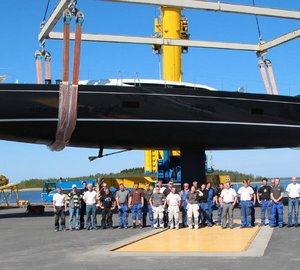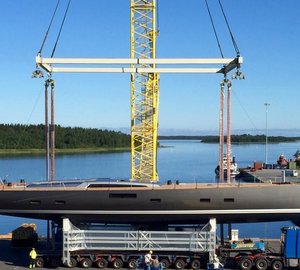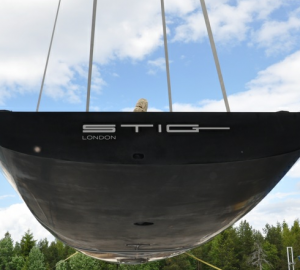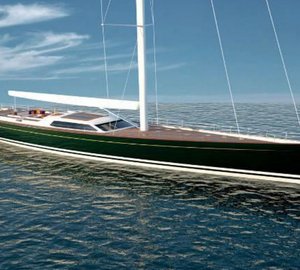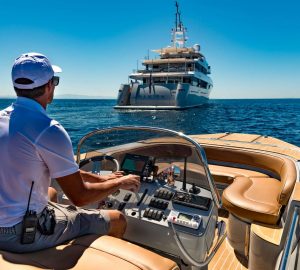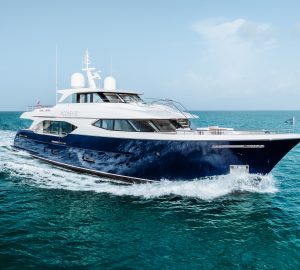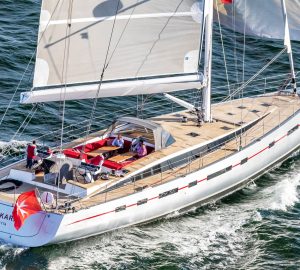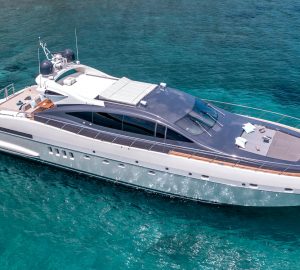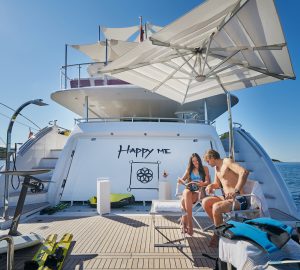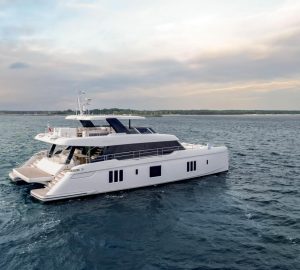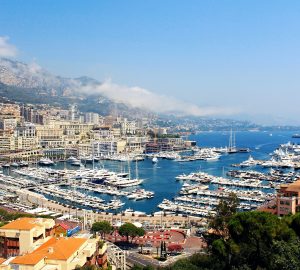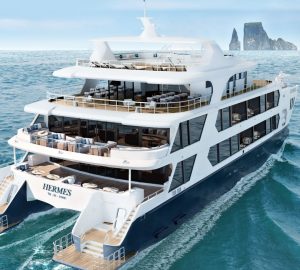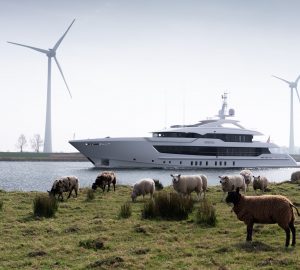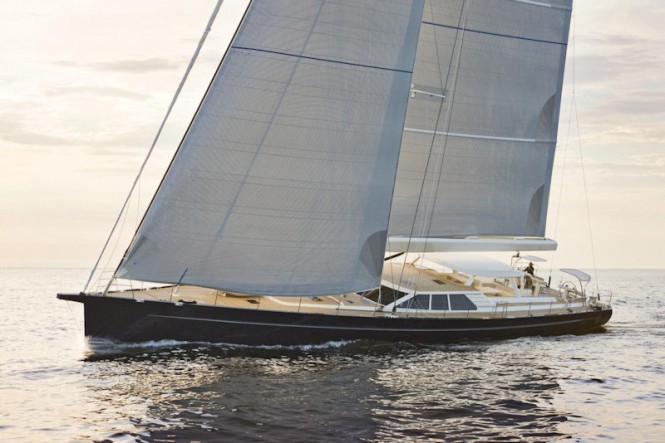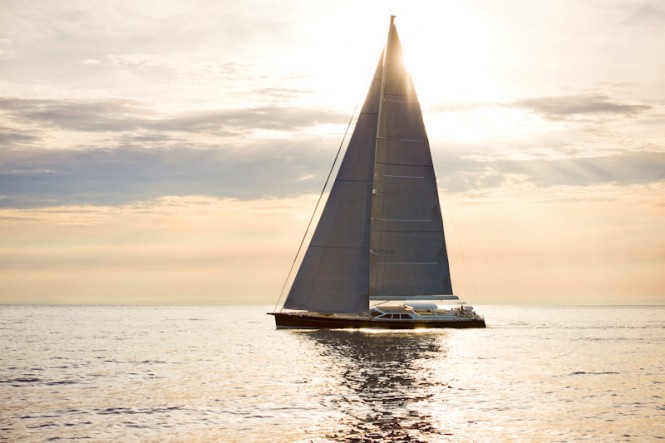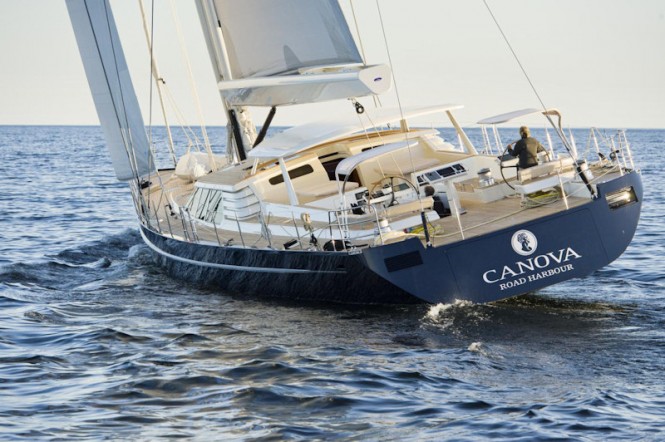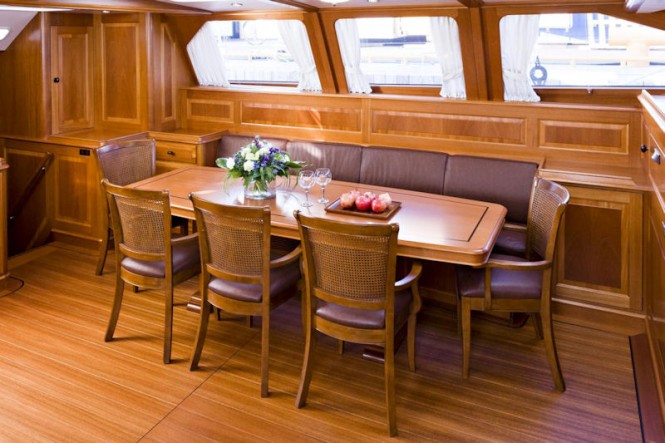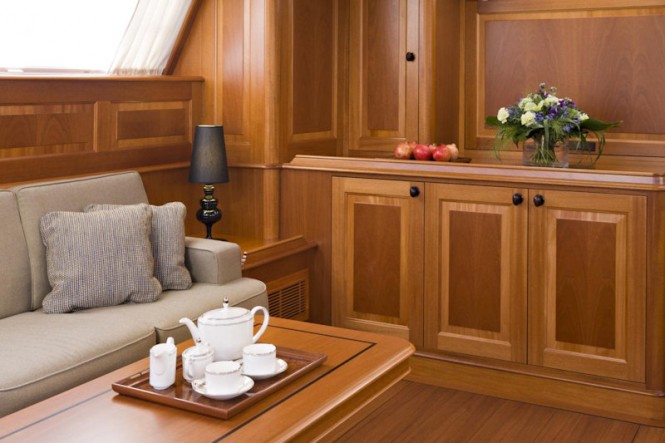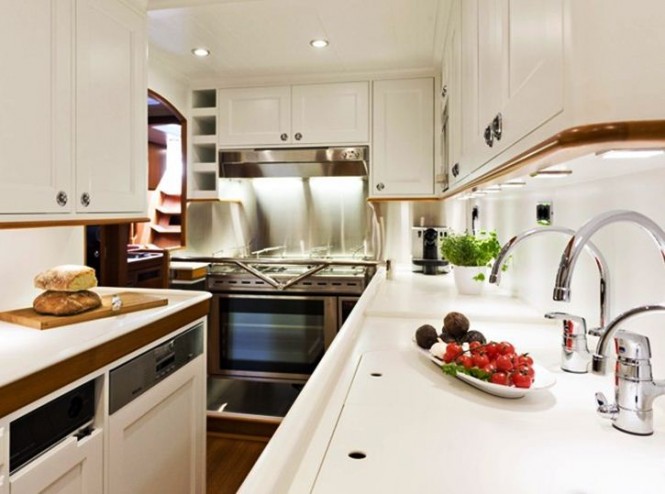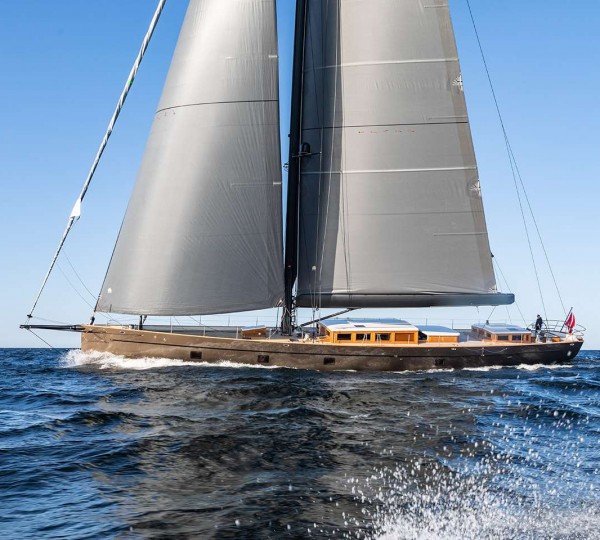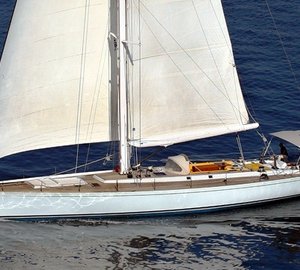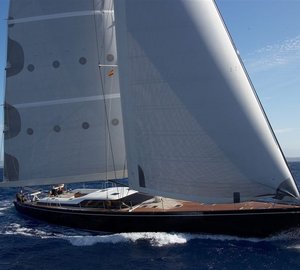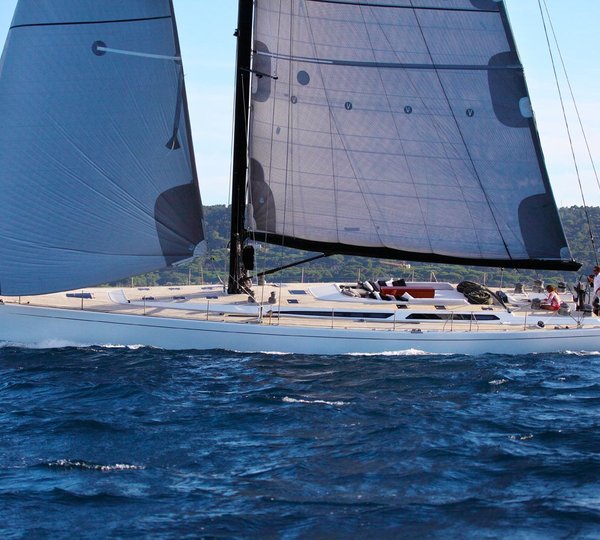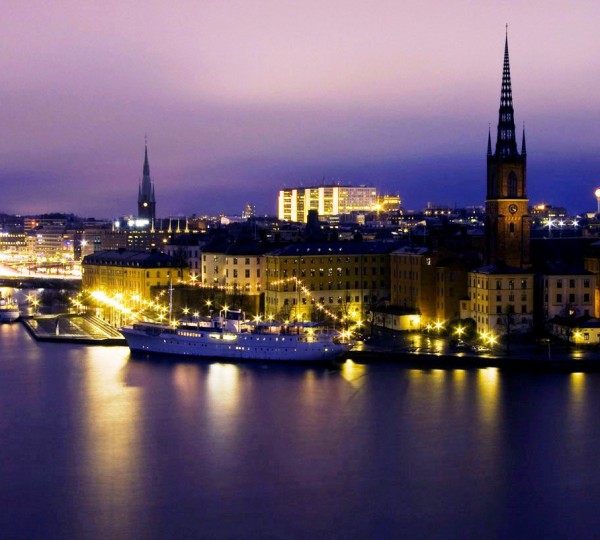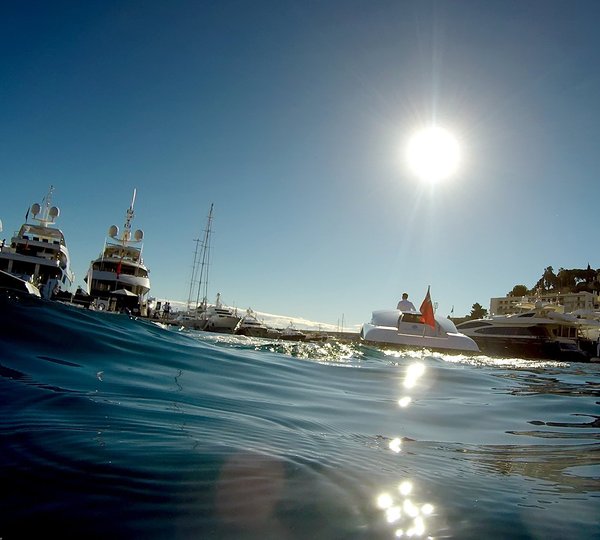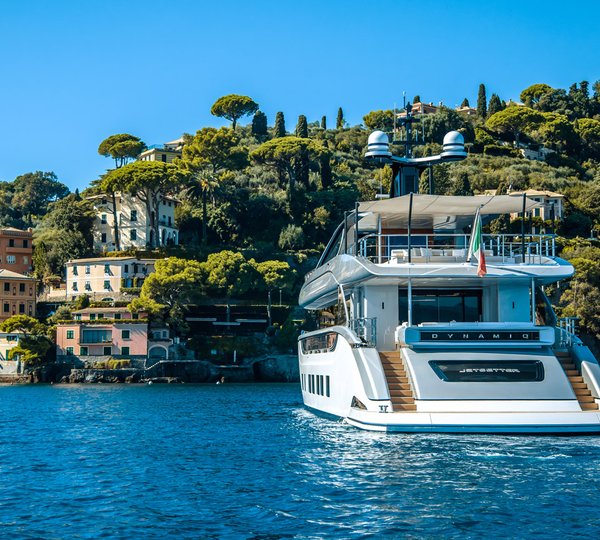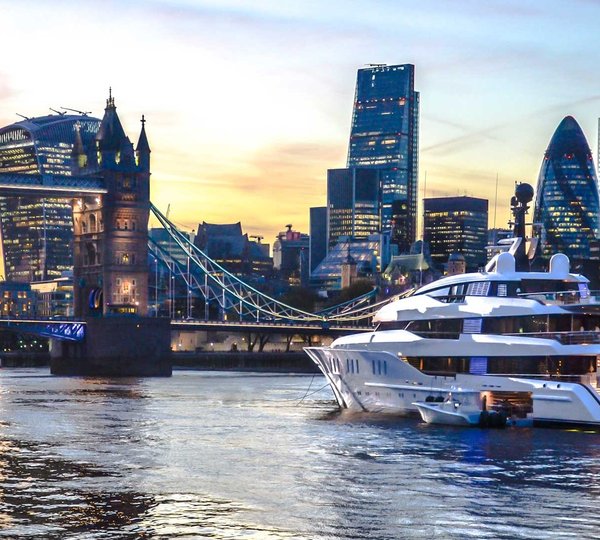The 37.5m superyacht Canova was launched by Baltic Yachts in May 2011 and will be delivered to her new owner later this month. The Baltic Yachts 112 yacht Canova is a sailing yacht that was specifically designed for circumnavigating the globe. Baltic Yachts has the pleasure to exhibit the newly launched Baltic 112 sailing yacht Canova during Monaco Yacht Show 2011 from 21-24 September 2011.
BALTIC 112 Sailing yacht Canova features naval architecture by Judel & Vrolijk as well as Italian naval architect Alex Vismara who worked closely with the owner, bringing his design input into the boat. Baltic’s own in-house design teams provided much of the technical details for the boat. R&J Design worked on the hull, deck, interior, plumbing and hydraulics, while Flink Engineering provided specifications for the electrics and electronics.
The owner from Italy already has a good relationship with the Baltic yard and has already completed his first global circumnavigation with his current Baltic yacht. This time he was intent on doing it with the minimum number of port stopovers, remaining as independent as possible from needing to refuel and restock the boat in harbours and marinas. The challenge for the Finnish boat builder Baltic Yachts and the other partners in this Canova yacht project was to incorporate sufficient storage capacity without compromising the high levels of performance which have become the trademark of every Baltic yacht.
“The owner is leaving it up to us to work out many of the technical hull and deck details, but what he has been very specific about is wanting to get sufficient water and fuel capacity for some proper, ocean-going, long-distance sailing. During his voyage he wants to remain as independent as possible from needing to refuel and restock the boat in harbours and marinas.” Said Kenneth Nyfelt, Sales Manager at Baltic Yachts.
Having the superyacht Canova designed as a high storage capacity boat, Project Manager Jouni Hirvenkivi put this into perspective. “In Baltic Yachts terms, a fuel capacity of 6000 litres is certainly significant, but not so much as to unduly affect the performance of the boat. One of the great advantages of constructing a light boat is that it also allows you to save on fuel capacity, because the boat is so easily driven.
“The good thing from a design perspective is that we don’t have to spread the fuel storage all around the boat, we can centralise the weight of the fuel tank in the hull,” said Hirvenkivi. The hull is due to be constructed of E-glass and aramid, with carbon fibre reinforcements in heavily loaded areas, such as the beams and stringers. The rig is carbon fibre so there are still strong elements of high performance in the 112-footer, but what will distinguish it from other superyachts of this size is the attention to detail in the lavishly-decorated interior.
The Baltic 112 Canova has a classical interior, featuring traditional materials mahogany. The owner is known to be an admirer of the Baltic 141 sailing yacht Canica launched in 2003, which is another Judel/Vrolijk design with a number of classic features that the owner of the Baltic 112 S/Y Canova wanted to emulate.
One of the challenges of the Canova yacht project was to remain faithful to the aesthetics of the yacht whilst also meeting the requirements of one of the classification societies. “The requirements for safety equipment and safety margins are quite high, which is a good thing,” says Nyfelt. “We are confident that the Baltic 112 j/v will fulfil all the safety requirements without compromising the aesthetic intentions of the owner.”
According to Hirvenkivi the Canova sailing yacht, and particularly the deck and rig controls, have been designed with shorthanded sailing in mind. Most of the sail controls can be managed from the safety of the cockpit. Safety is a high priority in every area. “We discussed quite a lot about ‘what if’ situations – for example the owner plans to have completely separate portable navigational electronics, stored in aluminium case, with the idea that he has a back-up, almost no matter what happens. It is part of a way of thinking, of wanting to be as self-sufficient as possible. I think this boat will have a very interesting life. If everything goes as planned, this boat will be launched in 2011 and it won’t be long before she sets sail on her voyage around the world.”
Designer’s comment
The B112 judel/vrolijk & co sailing yacht Canova was designed for an experienced sailor who enjoys the pleasure of a really fast sailing yacht. To fulfil the needs of long distance cruising to exotic and remote waters, the decision was made to put the focus on safety and comfort and therefore to go for an e-glass sandwich hull. Designing to the same stiffness, this material leads to slightly thicker skins of the hull shell compared to a full carbon hull and therefore the hull becomes quieter and gets a bit of extra safety against impact damage.
Nevertheless it was the goal to create a real performance yacht that allows for fast ocean passages and easy handling of the yacht. Therefore the boat has been projected with a lift keel concept, that has been designed to achieve a reasonable, but not extreme shallow draft of approx. 3.3 m with keel up and that provides a deep draft of 5.5 when the keel is fully lowered to combine a proper righting moment with a moderate ballast weight and to end up with a ratio of weight, ballast and sail area that allows for good sailing performance.
With this concept in conjunction with a clever and lightweight structural grid, a carbon rig and consequent weight saving in interior construction and system concept design, it was possible to drop the weight of the yacht to approx. 93 t and therefore to stay more than 20 t away from the typical weight of a cruising boat of this size and comfort level.
Main Characteristics of the BALTIC 112 Sailing yacht Canova
Naval Architect: judel/vrolijk & co
Concept and styling Baltic Yachts, R&J Design
LOA 34,233m
LWL 31,165m
Beam 7,830m
Draft 5,50/3,30m
Displacement 93034 kg
Ballast 34800 kg
IM 43,600m
J 12,550m
P 42,900m
E 14,600m
Hull construction
Hull is built in advanced composite construction using Epoxy, vacuum-infused sandwich laminates that are post-cured in order to achieve optimum characteristics and strength. Main reinforcements in laminates are unidirectional and multi-axial Glass/Aramid combinations. Hull outer skin to incorporate extra layers of Aramid fibers for added impact resistance and safety. Sandwich material Core-Cell.
Deck construction
Deck is built in advanced composite construction using Vacuum infused, Epoxy, carbon, sandwich laminates that are cured under high vacuum under 60C temperature for a minimum of 8 hours. Main reinforcements in all laminates are unidirectional and multi-axial Carbon. Sandwich to be Core-Cell foam.
Keel Lifting keel with a stainless steel shaft and a heavy lead keel bulb attached.
Interior Advanced lightweight construction interior. High tech materials covered with light Mahogany veneer.
Mast and rigging Offshore Spars
Main engine Cummins QSB5.9 INT/HO rating. 350 Hp at 2800 RPM
Propeller Varifold propeller, four blades.
Bow thruster One swing retracting bow-thrusters, Max Power R450 50HP
Stern thruster One swing retracting stern-thrusters, Max Power R300 34HP
Fuel tank 6000 litres
Fresh water 2000 litres
Batteries Starting battery 2 x 24 V DC 108 Ah
Service batteries 24 V DC 2000 Ah
Accommodation 14
Launch date Summer 2011

